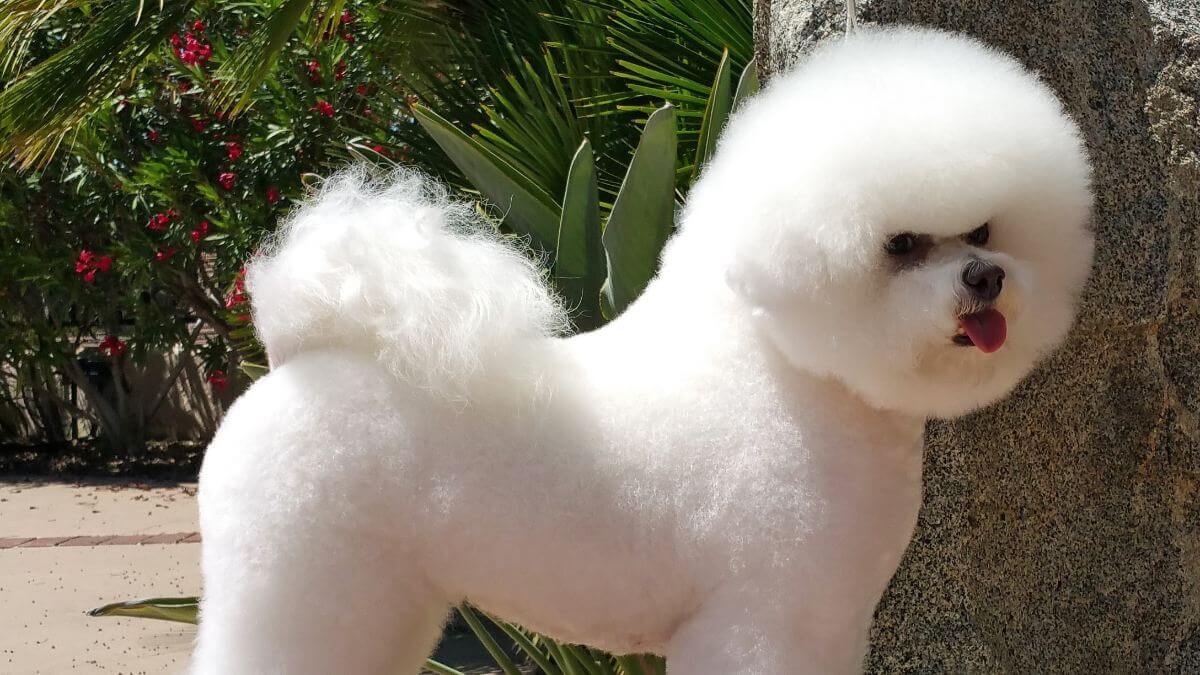
Home » The Bichon Frise

This article was originally published in Showsight Magazine, June 2014 issue.
This is a breed to be appreciated for characteristics we enjoy so much in a pet or show prospect. The Bichon generally is smart, clever, attentive, kind with other pets, and never noisy. The large, dark eyes spell friendliness and add to their particular style of carriage. Always noticeable is the head held high and a waving, plumed tail carried gaily over the back. This is the appeal that brought the breed to notice in the beginning of their appearance in this country.
Virtually unknown as a dog breed in America in 1957, Francois and Helene Picault arrived from France to join family members in Wisconsin. Along with them came a few Bichon Frise pets. Their dogs all possessed five-generation pedigrees as well as being registered in France. The breed, registered in France and Belgium, has been active for many generations, going back to the 1930s. It was thought by the Picaults that their Bichons would be readily accepted for registration at the American Kennel Club. This was not to be, much to their disappointment.
Once the inquiry was made, they were informed about certain procedures to be followed. Most of all, this effort would take many years of establishing clubs, gaining membership all over the country, and fulfilling other requirements without much encouragement.
Just prior to 1960, the Picaults moved to San Diego, California. This would be a turning point for the breed because of a few dog fanciers. They took up the cause to establish the breed and dedicated their efforts to work toward the goal.
The Bichon Frise Club of America and San Diego Bichon Frise Clubs were formed, and direction from the AKC led to a stud book being established. All Bichons were individually registered by this means, which included litters as they came along. The BFCA registry began with number one and continued for years. All records and money obtained through the registry were turned over to the AKC.
The first accomplishment for Bichon owners was the eligibility to enter the Miscellaneous Class. Then, on to full registration and entry to the regular classes. It was more than ten years of dedication to this effort and a happy day in 1973 when the first licensed shows were held. Prior to this date, Bichons were exhibited at specialties provided by the BFCA and local clubs.
After all the favorable comments, it is important to mention the upkeep of the Bichon. Theirs is a coat that grows continually and requires constant care. The texture is soft and thick and needs brushing to the skin. Professional grooming care may be necessary.
A two-inch length, scissored coat makes maintenance easy, and that pet can look like a puppy forever! Show coats are left longer and styled. I have personally been involved in every aspect of Bichon activities since 1960 and wish to say I owned and worked with them for the fun of it.